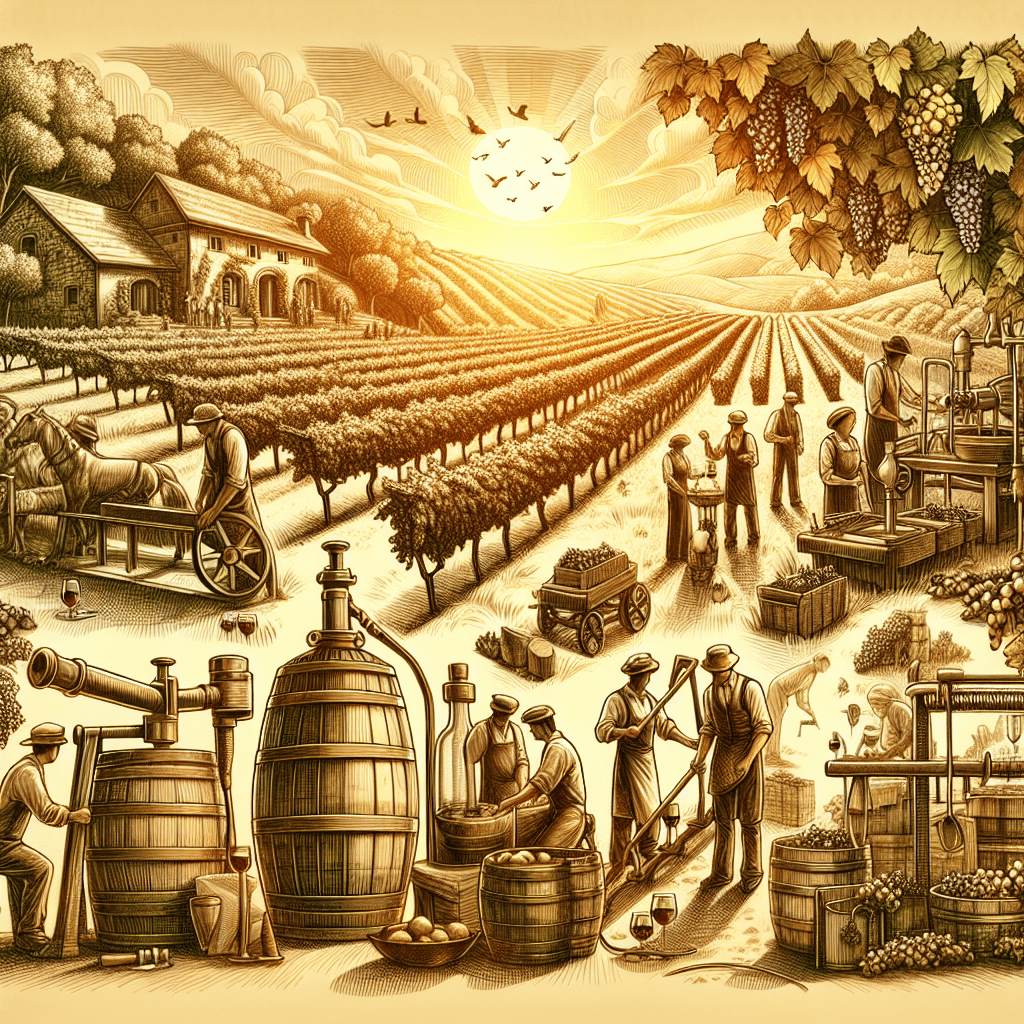Wine has been an integral part of human history and culture for thousands of years. From its mythical origins in ancient civilizations to its role as a symbol of celebration and refinement today, wine holds a special place in the hearts of many around the world. Let’s take a closer look at the fascinating history and cultural significance of wine making.
The Origins of Wine Making
The history of wine making dates back to ancient civilizations such as the Egyptians, Greeks, and Romans. The earliest evidence of wine production can be traced back to the Neolithic period, around 6000 BC, in the regions of Mesopotamia (modern-day Iraq) and the Caucasus (modern-day Iran and Georgia).
It is believed that the accidental fermentation of grapes led to the discovery of wine. Over time, the cultivation of grapevines and the art of wine making spread throughout the Mediterranean region and Europe, with each civilization adding its own unique techniques and traditions to the process.
Wine as a Symbol of Celebration and Ritual
Throughout history, wine has played a central role in celebrations, rituals, and religious ceremonies. In ancient Egypt, wine was offered to the gods as a symbol of gratitude and abundance. The Greeks and Romans also incorporated wine into their religious practices, believing it to be a gift from the gods.
In medieval Europe, wine making was often carried out by monks in monasteries, who produced wine for religious ceremonies and as a source of income for their communities. Wine making became a respected and revered art form, with vineyards and wineries being established in regions across Europe.
The Renaissance of Wine Making
The Renaissance period in Europe saw a revival of interest in the arts, sciences, and culture, including wine making. Italian and French winemakers began experimenting with new grape varieties and techniques, leading to the development of some of the most renowned wine regions in the world, such as Bordeaux, Burgundy, and Tuscany.
The Age of Exploration also played a significant role in the spread of wine making to new territories, as European explorers introduced grapevines to the Americas, Australia, and South Africa. This global exchange of grape varieties and wine making practices led to the diversification and expansion of the wine industry.
Modern Wine Making and Culture
Today, wine making has evolved into a sophisticated and multi-faceted industry, with a rich tapestry of traditions, techniques, and styles. Wine enthusiasts around the world continue to explore and appreciate the diverse flavors and aromas of wines produced in different regions and climates.
Wine tourism has become increasingly popular, with wine enthusiasts and connoisseurs embarking on wine tours to experience the vineyards, wineries, and tasting rooms of renowned wine regions. This cultural exchange and appreciation of wine making traditions have helped to preserve and promote the heritage and legacy of wine making.
Conclusion
Exploring the rich history and culture of wine making reveals the deep connection between humanity and this ancient elixir. From its humble beginnings in the cradle of civilization to its global presence today, wine continues to captivate and inspire people around the world. Through the artistry and craftsmanship of wine makers, we can experience the beauty and complexity of this timeless beverage.
FAQs
Q: What is the oldest known wine making region?
A: The oldest known wine making region is believed to be the Caucasus region, specifically modern-day Georgia, where evidence of wine production dates back to around 6000 BC.
Q: How is wine made?
A: Wine is made through the fermentation of grape juice, which converts sugars into alcohol. The process involves crushing the grapes, extracting the juice, fermenting the juice with yeast, and aging the wine in barrels or tanks.
Q: What are some famous wine regions in the world?
A: Some famous wine regions in the world include Bordeaux and Burgundy in France, Tuscany in Italy, Napa Valley in California, and Rioja in Spain.
TIP: Try pairing different wines with food
One way to enhance your wine tasting experience is to pair different wines with food. Explore the art of food and wine pairing by matching the flavors and textures of your meal with complementary wines. Experiment with different combinations to discover new and delicious flavor profiles.
#Exploring #Rich #History #Culture #Wine #Making
